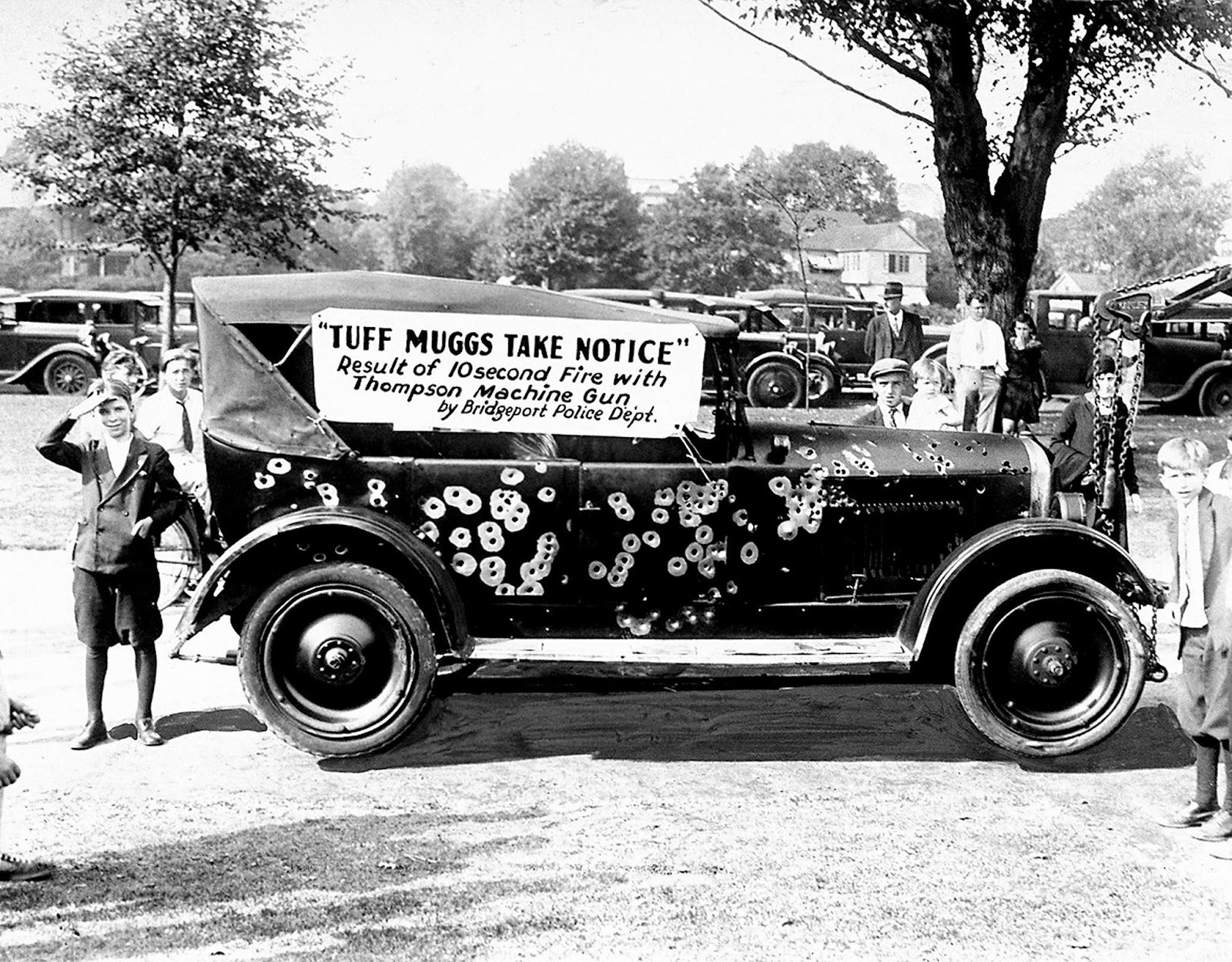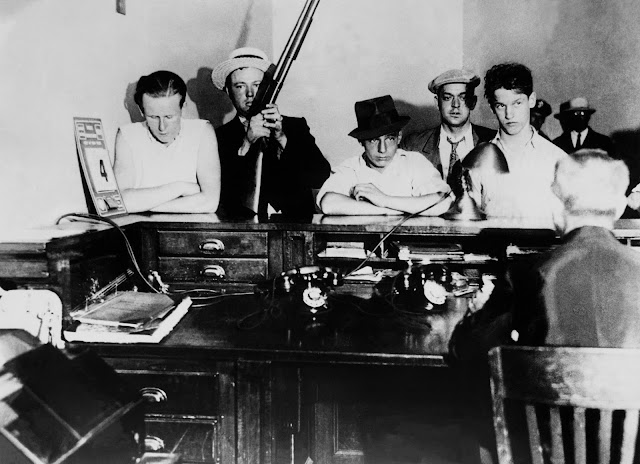Notorious Figures: Exploring American Gangsterism in the Roaring Twenties and Dirty Thirties

The clinking of champagne glasses, the rumble of Model T Fords, and the staccato bursts of Thompson submachine guns – these are the sounds that often accompany our image of the American gangster of the 1920s and 1930s. But beyond the romanticized portrayals in film and literature, the era of Prohibition and the Great Depression gave rise to a complex and often brutal criminal underworld that left an indelible mark on American society.
Imagine a nation grappling with economic hardship and social upheaval. Prohibition, the nationwide ban on alcohol, unintentionally created a lucrative black market, allowing ambitious criminals to seize control of the illegal liquor trade. These bootleggers, racketeers, and mob bosses built vast criminal empires, often resorting to violence and intimidation to maintain their power.
The 1920s and '30s witnessed the rise of some of the most infamous gangsters in American history. Names like Al Capone, John Dillinger, Bonnie and Clyde, and "Machine Gun" Kelly became synonymous with the era, their exploits captivating the public imagination even as they terrified communities. These figures weren't just criminals; they were cultural icons, albeit ones steeped in notoriety.
The rise of organized crime during this period was fueled by a confluence of factors. The economic instability of the Great Depression created desperation, driving many to seek illegal means of survival. The lax enforcement of Prohibition, coupled with widespread corruption within law enforcement and government, allowed criminal organizations to flourish.
Understanding the history of American gangsterism during this period requires examining the socio-economic context. The influx of immigrants, particularly from Italy and Ireland, created marginalized communities that were susceptible to the lure of organized crime. The promise of quick riches and social mobility within criminal organizations offered an alternative to the hardships faced by many.
The origins of American gangsterism in the 1920s and 1930s are inextricably linked to Prohibition. The 18th Amendment, which banned the manufacture, sale, and transportation of alcohol, inadvertently created a massive underground market. This vacuum was quickly filled by enterprising criminals who saw an opportunity to profit from the public's thirst for liquor.
The legacy of these notorious figures is complex and multifaceted. Their criminal activities undoubtedly caused immense suffering and loss of life. Yet, their stories also offer a glimpse into a turbulent period in American history, highlighting the consequences of social and economic instability, as well as the challenges of enforcing unpopular laws.
The gangsters of the 1920s and 1930s contributed, albeit unintentionally, to the development of modern law enforcement techniques. The rise of organized crime forced law enforcement agencies to adopt new strategies and technologies to combat these sophisticated criminal enterprises. This led to the development of the FBI's organized crime division and the implementation of new forensic techniques.
Advantages and Disadvantages of Studying 1920s-1930s Gangsterism
| Advantages | Disadvantages |
|---|---|
| Understanding social and economic context of the era | Potential for romanticizing criminal behavior |
| Learning about the development of law enforcement | Focus on violence can be disturbing |
Frequently Asked Questions
What were the main causes of gangsterism in the 1920s and 1930s? Prohibition, economic hardship, and social unrest.
Who were some of the most notorious gangsters of this era? Al Capone, John Dillinger, Bonnie and Clyde.
How did Prohibition contribute to the rise of organized crime? It created a lucrative black market for alcohol.
What was the St. Valentine's Day Massacre? A notorious gangland slaying orchestrated by Al Capone.
How did law enforcement respond to the rise of organized crime? By developing new strategies and technologies.
What was the impact of the Great Depression on gangsterism? It exacerbated economic hardship and drove many to crime.
What is the legacy of 1920s-1930s gangsters? A complex mix of notoriety, cultural impact, and lessons learned.
Where can I learn more about this topic? Books, documentaries, and museum exhibits offer further insights.
The era of American gangsters in the 1920s and 1930s serves as a stark reminder of the consequences of social and economic instability. The rise and fall of these notorious figures offer valuable lessons about the complexities of human behavior, the unintended consequences of prohibition, and the ongoing challenges of combating organized crime. While their exploits have often been romanticized, it's crucial to remember the devastating impact their actions had on individuals and communities. By studying this period, we gain a deeper understanding of the forces that shape our society and the importance of addressing the root causes of crime. Continue exploring this fascinating and complex period of American history through further research and critical analysis. The legacy of these gangsters continues to resonate today, reminding us of the importance of social justice, economic opportunity, and the rule of law.
Celebrating coworkers birthdays meaningfully
Unlocking your academic path navigating the usc course schedule
Benjamin moore co limited new jersey your guide to premium paints








.jpg)




